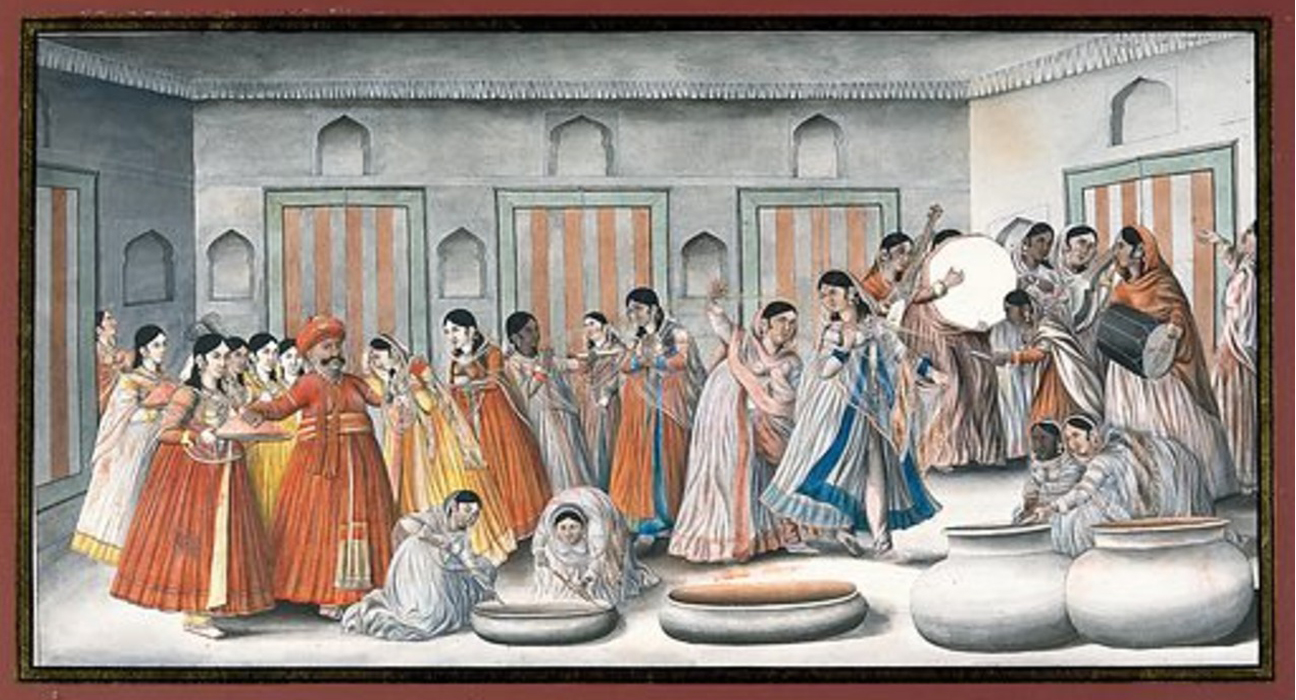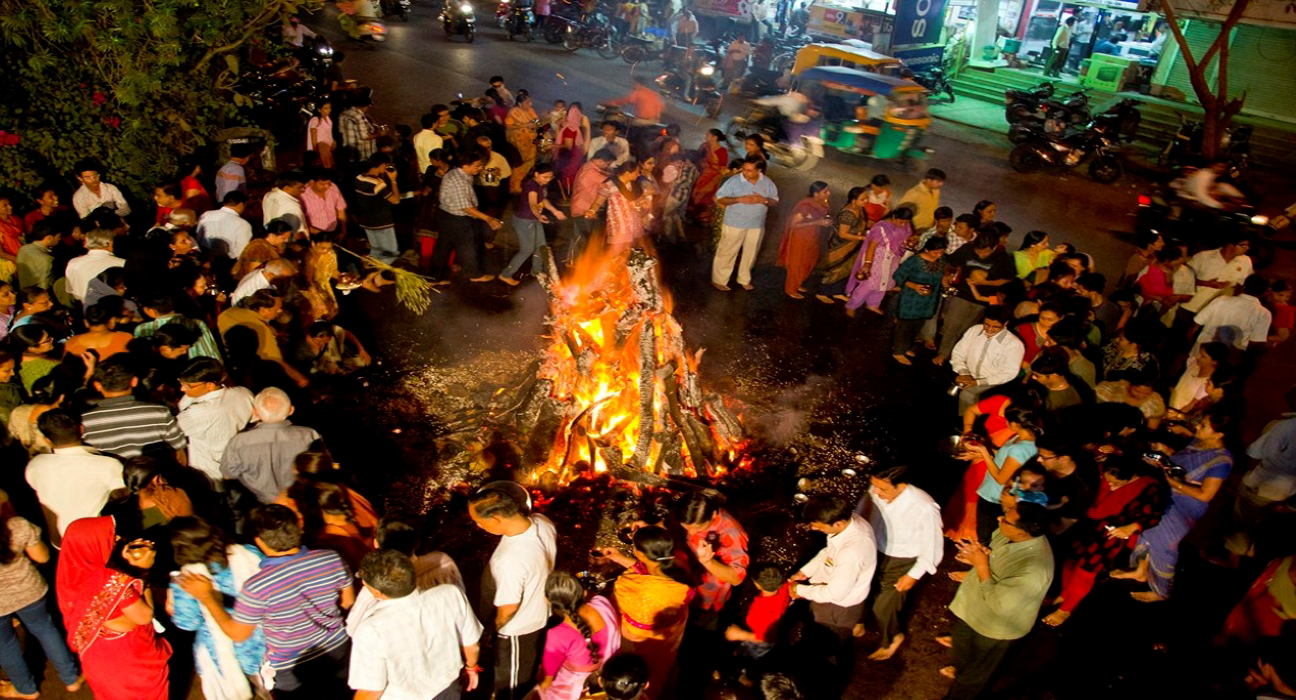
Holi is a festival celebrated in India. Holi is a symbol of the arrival of spring with colors and happiness. People come together to paint each other, which is a symbol of the victory of evil and good and a symbol of love and unity. Holi is celebrated every month. Holi is a festival of happiness. Holi is mainly celebrated by Hindus in India. Holi brings happiness in the country.
1-Ancient Origin:
Holi is depicted in Hindu mythology and is mentioned in many scriptures including Vedas and Puranas. Holi has been celebrated in India for many years.

2 - Holika Dahan(Chhoti Holi):
Holika Dahan: On the day before the festival of Holi, bonfires are lit in the huts of the devotees of Lord Vishnu, this process is celebrated by the name of Holika Dahan or Choti Holi.

Holika Dahan, Holika Dahan is a ritual of lighting a bonfire on the day before the main festival in which people participate. This tradition is celebrated for the victory of good over evil, which protects the world. And in the context of Holika, it is a symbol of death. As people gather around the bonfire, it is a time of worship, it is a time of asking for happiness and strength. Holika encourages unity and is celebrated as the festival of religion, This ritual is celebrated with great pleasure.
3 - Regional variations :
Holi is a Hindu festival of colors, it is celebrated with great joy and enthusiasm throughout the country. Holi is celebrated in different ways in different parts of India, there can be regional differences in the way of celebrating Holi.

- 1.North India:
- In North India, especially in states like Uttar Pradesh, Bihar, and Delhi, Holi is commended with massive interest. Individuals enjoy the conservative custom of applying colors to one another, joined by singing, moving, and devouring. One huge custom in North India is the Holika Dahan, or the huge fire lit on the prior night Holi to represent the triumph of good over evil. Networks accumulate around these massive fires, perform strict customs, and trade good tidings.
- 2.West India:
- 3.South India:
- 4.East India:
- 5.Himalyan District:
In states like Gujarat and Maharashtra, Holi is celebrated with local meetings and social exhibitions like dandiya and garba moves. One more exceptional rehearsal in pieces of Maharashtra is the festival of 'Rang Panchami', which happens five days after the fundamental Holi celebration.
While Holi isn't as broadly celebrated in South India contrasted with the North, there are locales like Karnataka and Tamil Nadu where it is seen with enthusiasm, though with territorial varieties. In Tamil Nadu, Holi is referred to as 'Kamavilas' and is praised as a spring celebration. Individuals take part in perky variety tossing, and there are social projects coordinated in certain areas.
In West Bengal and Odisha, Holi is all the more generally known as 'Dol Jatra' or 'Dol Purnima.' It is praised with the love of Master Krishna and Radha, with enthusiasts taking out parades conveying symbols of the heavenly couple on an enlivened cart (dol).
In states like Himachal Pradesh and Uttarakhand, Holi is commended with special interest. Individuals sing predictable Holi tunes, dance, and partake in parades. In certain region, there's a custom of breaking earthen pots loaded up with buttermilk, like the 'dahi handi' custom in Maharashtra. These are only a couple of instances of how Holi is commended contrastingly across different locales of India, each adding its own social touch to the merriments.
4.Social Harmony:
Holi is a celebration that rises above welcoming limitations and unites people paying little heed to standing, or status. During Holi, individuals fail to remember their differences and meet up to celebrate with happiness and pleasure. Radha Krishna: One of the most famous legends related with Holi is the romantic tale of Master Krishna and Radha. As indicated by fables, youthful Krishna, with his blue skin, had a shaky outlook on whether lighter looking Radha would acknowledge him. His mom, Yashoda, recommended he actively apply variety all over. Accordingly, the custom of applying colors during Holi is accepted to have begun from this lively demonstration.

5 - Conventional Desserts:
Holi is likewise a celebration known for its wonderful desserts and pleasures. Quite possibly of the most celebrated sweet delighted in during Holi is "gujiya," a sweet dumpling loaded up with khoya (milk solids), nuts, and dried organic products. Other customary pleasures incorporate "thandai," a milk-based juice injected with flavors and nuts, and "puran poli," a sweet flatbread loaded up with a lentil and jaggery filling.

Radha krishna:
- Holi admirations the appearance of spring, featuring the harmony among people and nature. It urges people to abandon the past, forgive and never look back, and embrace fresh starts with energy and satisfaction.
Latest Posts
-
1March 01, 2024
-
2March 02, 2024
Get The Best Blog Stories into Your icountox!
Sign up for free and be the first to get notified about new posts.


